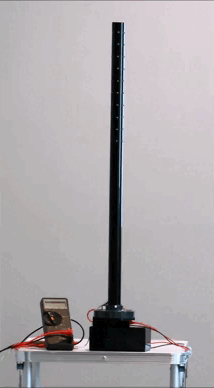
A Demonstration Aide...
This web site describes the construction of a LED light tower that is useful as a signal level indicating device for demonstrations and lectures before groups of people. It can be made large enough and bright enough to be visible in a large classroom, auditorium, or theater. It is a substitute for electro-mechanical meter movements, which are not normally large enough to be seen from any distance. It is a very simple device requiring a single integrated circuit. It is easily battery-powered and portable. I have found it most useful in my Antenna and Propagation Phenomena talks.

The Electronics...
The single integrated circuit used is a LM3914. This chip was designed by National Semiconductor in the late 1970's. It was made to drive up to 10 LEDs, LCDs, or vacuum fluorescent displays. It will drive displays in linear step order. Its cousin the LM3915 will drive display segments in logarithmic 3 dB between steps order and its other cousin the LM3916 in VU meter steps. (VU “Volume Unit“ steps are used in audio applications.) The LM3914 we will be using can drive LEDs with DC regulated currents of 2 mA to 30 mA, including strings of several LEDs in series.
Note that the easy to work with 18-pin DIP package, the LM3914N-1, is obsolete. At the time of this writing (late 2023) they are plentiful on Amazon and eBay. Otherwise, it is still manufactured in a 20PLCC surface mount package. 20PLCC-to-DIP adaptor sockets are also available allowing easy hand-wired perf board construction.
LM3914's can be chained together to drive a large number of LEDs if more than ten steps are needed. The simple circuitry for chaining LM3914's is on its data sheet. This chip can be battery powered from 3V to 24V.
Obviously, an Arduino could do this job. Perhaps overkill considering how incredibly simple the LM3914 approach is. Some things you could add with an Arduino are being switchable between a linear response and a log response. You could also add an audio tone with a frequency corresponding to the signal level. Inside of a LM3914 is mainly a string of resistors feeding a string of comparators. Three quad comparators would do the trick if you want to roll your own.
Green is the wavelength that the human eye peaks at so is a good choice. Next, it is desired that the indicators are visible to an audience that may be spread widely horizontally in front of the presentation area. Especially suited for this are oval LEDs with a wide beamwidth horizontally and a narrow beamwidth vertically thus projecting maximum energy towards the audience. Two or three such LEDs in series could cover a 180-degree swath in front of the light tower.
I built my first two light towers using one-inch Schedule 40 PVC pipe. PVC pipe is inexpensive and easily drilled. One-inch diameter allows enough access for soldering to the LED leads and is just large enough to fit a printed circuit board for the drive electronics. I would not recommend a smaller diameter. My tower is about three feet tall, the height is whatever you want. The base is a one-inch pipe flange. These can be found in PVC or iron. The only tools required will be a drill and a soldering iron.
It can be battery powered from 3V to 24V. With the groups of three very bright LEDs that I have used my tower draws 10 mA at 9V with no LEDs lit, 17 mA with all 30 LEDs lit (ten groups of three.) At 12V it draws 12 mA with no LEDs lit, 160 mA with all 30 LEDs lit. I used to run mine from a 12V Gel Cell but found a better way. I have some Makita battery-operated power tools and as a result have four of their Lithium Ion 5Ah 18V batteries. You can buy a battery “socket“ so you can power whatever you want from these batteries that are otherwise sitting around doing nothing. Power tool battery adapters are available online for several different power tool brands. A several Amp-Hour battery will run a light tower for a great many hours. Just don't exceed the 25V maximum voltage rating for the LED driver chip.
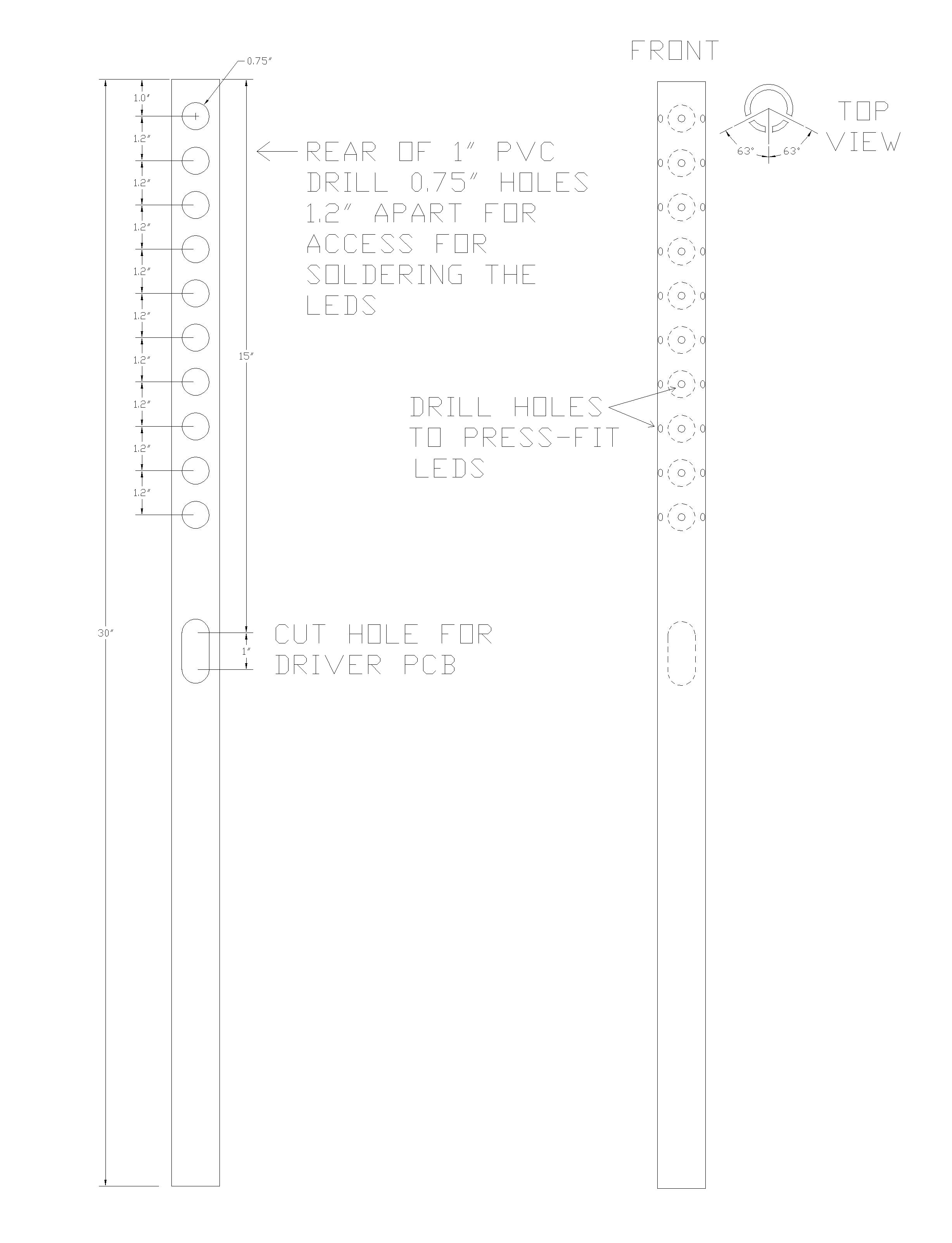
The 0.75-inch holes are for easy access for soldering to the LED leads. They can be drilled with short step or cone drill bits. The number of LEDs per stage is up to you. If you wish to cover a 180-degree wide area as I did then three wide beam LEDs about 60-degrees apart would be in order.
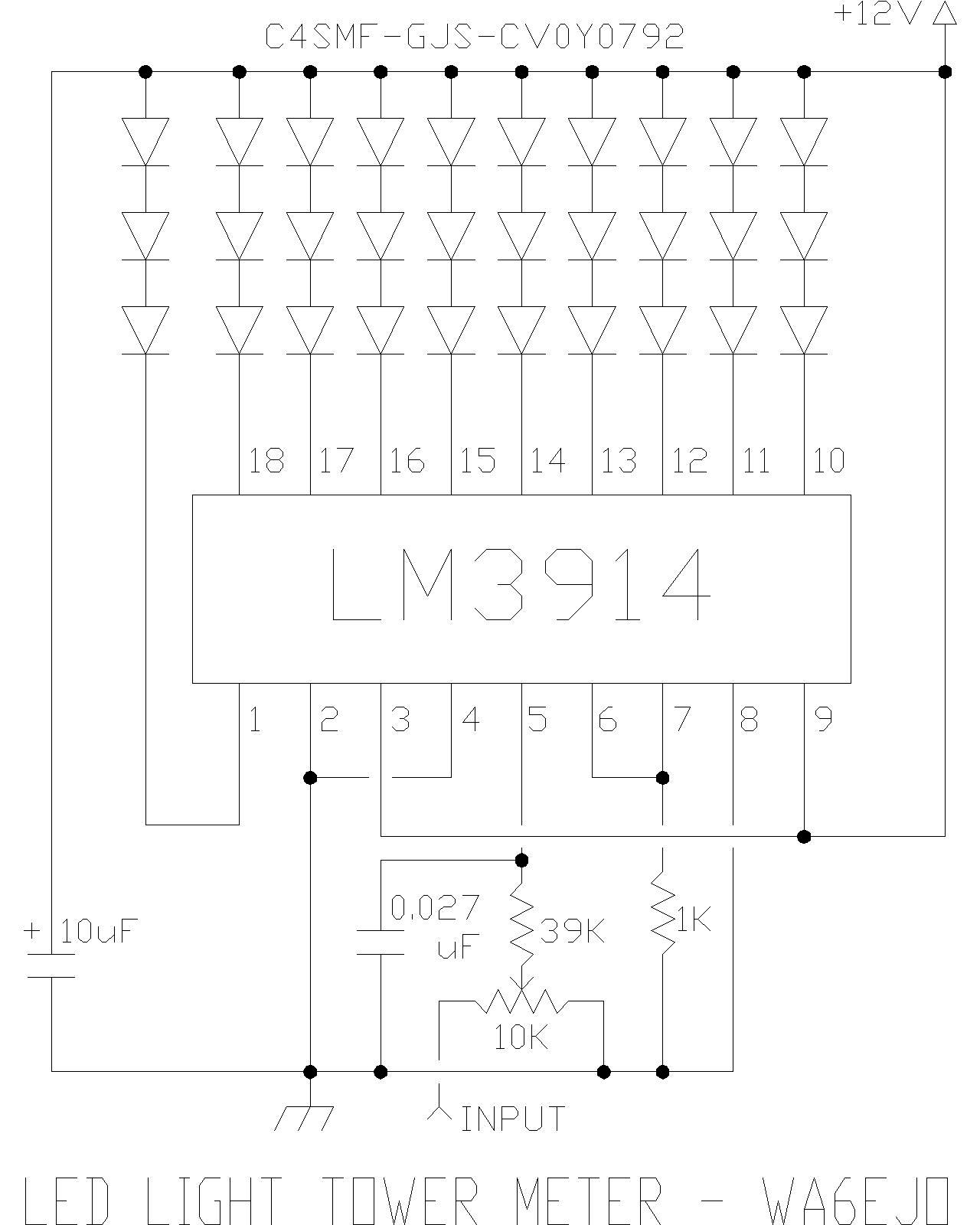
While my schematic shows it using 12V, I have run my tower from 9V to 18V with no problems. The LEDs may get dim at low voltages. Refer to the LM3914 data sheet for how to set the LED current and reference voltage. For the component values in the schematic above the LEDs are fed with about 15 mA when the tower is powered at 12V. All ten LEDs will be lit (full scale) with as low as 1.3V input (0.13V per step.) This can be adjusted with the pot to all LEDs lit with up to the voltage used to power the tower. You need to pot to be able to adjust the range of the light tower to match the range of input signal you expect from your equipment. With the LEDs I used at close range it is almost blindingly bright. Those particular LEDs are obsolete and were about 100-degrees wide by 50-degrees vertically and about 3000 mcd. There are similar LEDs available today, CREE C5SMF-GJx series would do.
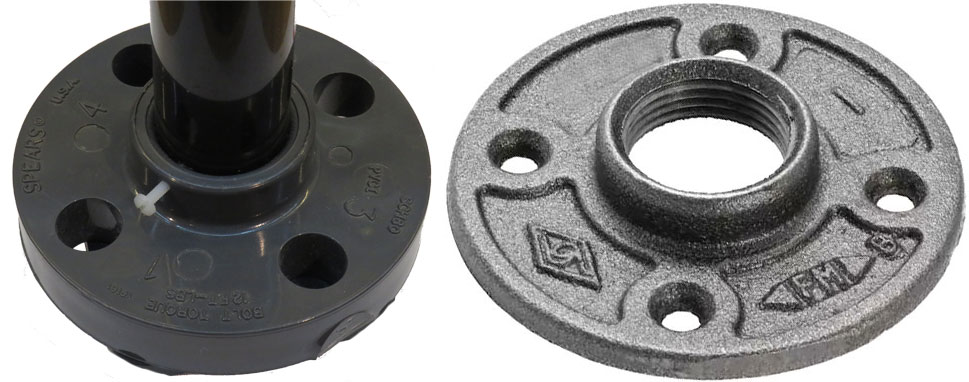
A pipe flange is a handy way to make a base for your light tower. Or, you could just drill hole in a block of wood. Let your degree of laziness dictate.

I use my Makita power tool batteries to power my light tower. Power tool battery sockets are available from Amazon and elsewhere. I now use my Makita batteries to power other projects...

Visible and Infrared LED optical transceivers.
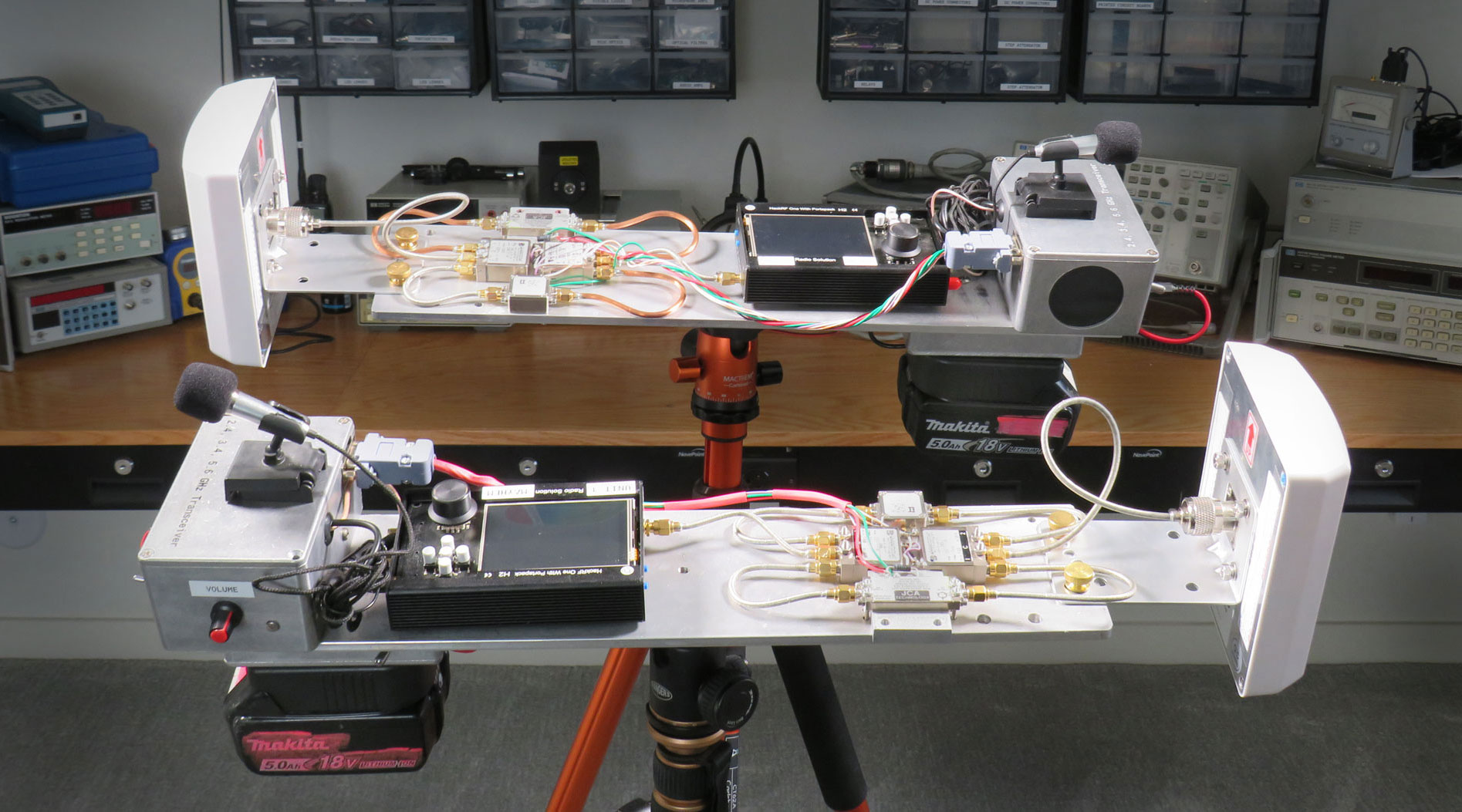
HackRF One three band microwave transceivers.
Other links that may be of interest...
The Glass Block Pond:
Glass Block Walkway Lights:
Glass Block Walkway Lights... http://www.kissingfrogs.tv/blocklights.html
Round Patio with Custom Tiles:
Round Patio with Custom Tiles... http://www.kissingfrogs.tv/roundpatio.html
A White Light Emitting Diode (LED) lit Patio Cover:
White Light Emitting Diode (LED) lit Patio Cover... http://www.kissingfrogs.tv/patiocover.html
A gilded metal wind sculpture of fish:
Flying Fish Swim with the Breeze... http://www.kissingfrogs.tv/windsculpture.html
Water Lily Pots with Integral Feeding Tubes:
Easy to Feed Water Lily Pots... http://www.kissingfrogs.tv/lilypots.html
Details of a unique bamboo and gilded copper garden trellis:
Bamboo and Gilded Copper Trellis... http://www.kissingfrogs.tv/trellis.html
An Illuminated Glass, Gold, and Copper Birdbath:
Glass, Gold, and Copper Birdbath... http://www.kissingfrogs.tv/birdbath.html
A unique 97-foot long fused glass-on-brick project:
97' long fused glass-on-brick project... http://www.peltier-info.com/wall.html
Directory of over 100 pond supply dealers:
Pond Dealer Directory... http://www.kissingfrogs.tv/ponddirectory.html
A permanent Heron-deterrent Scarecrow installation:
Heron-deterrent Scarecrow Installation... http://www.kissingfrogs.tv/scarecrow.html
Homemade Mini Glassworking Lathe:
Homemade Mini Glassworking Lathe... http://www.kissingfrogs.tv/glasslathe.html
Home Made Bird Feeder LED Yard / Walkway Lights:
Home Made Bird Feeder LED Yard / Walkway Lights... http://www.kissingfrogs.tv/yardlights.html
Gopher Screen - keep moles and gophers from ruining your lawn:
Gopher Screen - keep moles and gophers from ruining your lawn... http://www.kissingfrogs.tv/gopherscreen.html
Largest Thermoelectricity information site on the 'net:
Thermoelectricity information site... http://www.peltier-info.com
Largest used high-tech equipment dealer directory on the 'net:
Largest used hi-tech equipment dealer directory... http://www.big-list.com
LED Light Emitting Diode spectral scans and measurements:
LED Spectral Scans... http://www.big-list.com/leds.html